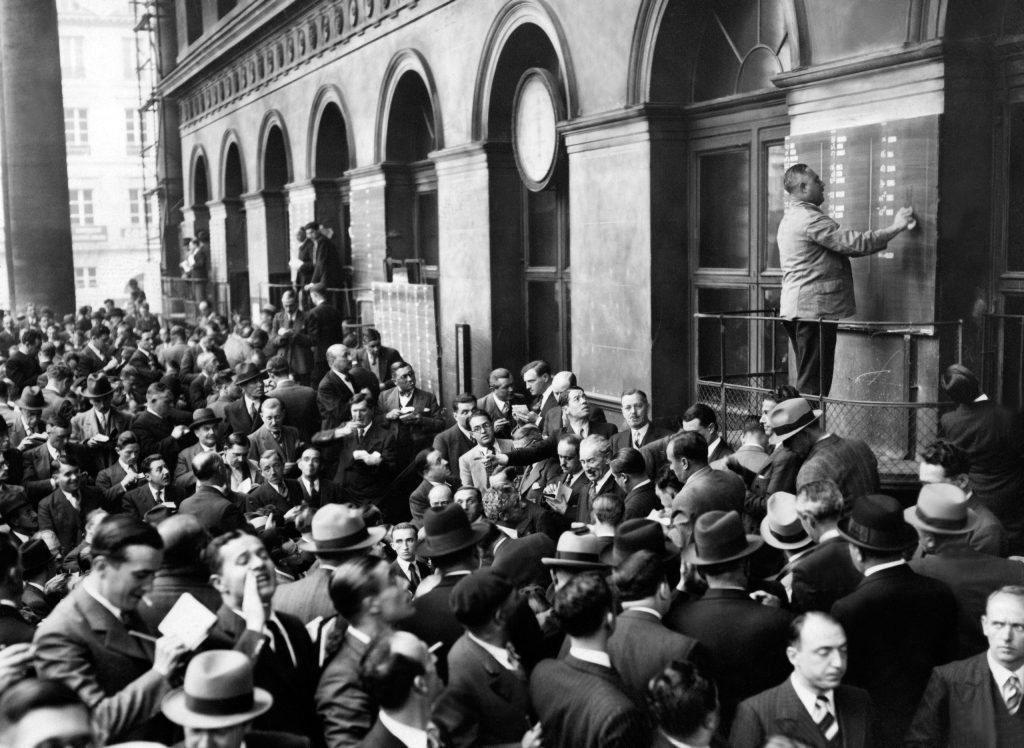Last week, Britain and France were treated to an avalanche of financial statistics jostling with the macabre daily litany of COVID casualty numbers. All are premised on a V-shaped recovery in which the severity and rapidity of the COVID recession is matched by a rapid bounce back. But the French above all should be aware of a historical parallel that suggests caution regarding the V-shaped recovery.
But first the size of the problem. In Britain, the Office for Budget Responsibility produced the most pessimistic scenario for the British economy compared to those of KPMG, Morgan Stanley and the OECD. Based on a three-month lockdown it projects a 2020/21 budget deficit of 14 percent falling back to a 2.1 percent trend by 2022 — the largest single-year deficit since World War Two. The OBR sees 2020 GDP falling by 35 percent and unemployment hitting two million, or 10 percent of the workforce. It projects a debt to GDP ratio rising in 2020/21 from 77 percent to over 100 percent, falling back to 95 percent by year’s end.
In France, figures seem optimistic given the state of the French economy before the pandemic. They show French GDP dropping by eight percent in 2020, a budget deficit jumping to nine percent from over three percent, and the national debt rising from over 100 percent to 115 percent. As with Britain, this is unprecedented since World War Two. As yet there are no scenarios for unemployment, but given the 8.1 percent rate before the crisis and the inflexibility of the French labor market — despite Macron’s partial reforms — these could be dire. France’s economic desperation is reflected in it leading the charge for European debt mutualization, thus bundling her in with Italy, Spain, Greece against the frugal northern states.
So for Britain and France, a V-shaped recovery is existential to avoiding economic depression at home and a slump in their great power ranking abroad. Hence the vigor of the British and French monetary and fiscal response to ensure that the upward stroke of the V is not impeded.
Britain and France were also encouraging concerted international action behind the scenes. With remarkable speed, central banks and governments working in tandem stepped in courageously and with eye-watering largesse to come to the aid of their respective nation-states, with only the European Union dithering. The reflex in the media has been to turn for historical instruction to the 1930s depression when a similar train of events produced a share market crash, an oil price slump and in turn producing a banking, debt and unemployment crisis. But the similarities stop there. As the former chairman of the US Federal Reserve Ben Bernanke told CNBC, the current crisis ‘is really much closer to a major snowstorm or a natural disaster than it is to a classic 1930s-style depression,’ leaving hope for a ‘fairly quick rebound.’
Most central bankers are betting on a V-shaped recovery. But the V-shape — in which the economy rises almost as fast as it sinks — is premised on the expectation that a vertiginous demand-led recovery from recession can be satisfied on the supply-side upstroke. The IMF has the French and British economies plunging by 7.2 percent and 6.5 percent respectively in 2020 and bouncing by 4.5 and 4 percent in 2021. Quite a feat. But will the British and French economies be sufficiently geared to satisfying that sharp national and international demand following the end of lockdown? For lessons, we would do well to turn to what happened in France in 1936.
Following the electoral victory of the left-wing Popular Front in May 1936, the new government was confronted by national strikes. For over a month, two million strikers occupied factories demanding major labour reforms. With the economy paralyzed, the new government ceded to a reduction in the working week from 48 to 40 hours, two weeks paid holidays and a 12 percent rise in wages. Many strikes continued. The franc came under attack and on October 1 the Blum government devalued by an enormous 35 percent.
The classic hope was that boosted workers’ incomes would stimulate demand for French goods, spurred on by a devalued franc making imports expensive and exports competitive, thus providing the upstroke of the V. The theory was good but the reality harsh. With workers preferring to taste the fruits of their newly won 40 hour week and two weeks paid holidays, French factories failed to satisfy pent-up demand and the boom was stifled. The hoped for V-shaped recovery flopped into an ‘L’, with inflation to boot.
***
Get three months’ free access to The Spectator USA website —
then just $3.99/month. Subscribe here
***
Today French trade unions — already on the war-path about Macron’s labor reforms before the coronavirus pandemic — are increasingly militant about what can be demanded of them after lockdown ends. On April 10, the leader of the French employers’ confederation, later supported by a government minister, publicly proposed worker sacrifices to ensure recovery. Sacrosanct privileges like the 35-hour week and statutory five weeks paid holiday would need to be foresworn in the national interest to avoid bottle-necks and satisfy demand.
History rarely provides cookbook solutions for the present, no matter how similar the parallel. But the example of 1936 France is a sobering reminder that V-shaped recoveries cannot be taken for granted.
This article was originally published onThe Spectator’s UK website.

























